Chicken Tunnels For The Garden – A Chicken Super-Highway
The Chicken Super-Highway: Amazing Chicken Tunnels
Are you looking for a super fun way to let your chickens free range but in a more controlled manner? Boy, have we got some ideas for you!
Chicken tunnels for the garden or outdoor area have become a trend among chickeneers, especially in urban settings. Whether you have a backyard, garden, or rural setting, you can build a fantastic superhighway for your feathered friends!
Are you ready to explore all there is to know about this thing called a chicken tunnel?
What Is A Chicken Tunnel?
A chicken tunnel, also known as a chunnel, is an extension of the chicken coop/run. Various materials are used in constructing a chunnel which range from wire to netting. Chunnels provide chickens a way to free-range within a controlled environment. The protection of the enclosure, for the most part, keeps predators at bay.
You can get as creative as you want in building a chunnel. Some chicken owners have gone to great lengths to create a maze of tunnels that are underground, above ground, and even include towering bridges above the yard.
If you prefer to just build a run for your coop, that’s fine too. For tips and ideas on building a chicken run, see our guide here.
Benefits of a Chicken Tunnel
It goes without saying that your chickens benefit from any form of free-ranging. Having areas to explore provides stimulation, and yes, chickens can become bored with the same old run.
So, what exactly are the benefits of using a chicken tunnel?
-
First and foremost, your chickens will be happy little birds.
-
Happy chickens that are continually exploring the tunnels are less likely to be overweight.
-
By positioning your tunnel in the right place, your garden will have fewer pests because chickens love insects!
-
There will be less bullying and picking at each other since the tunnels provide room to roam and spread out.
-
Tunnels provide your chickens places to do what comes naturally, and that’s to scratch and pick at the ground.
-
Because your chickens have the area to roam within the tunnels, they are not bunched together, where disease loves to thrive.
-
The eggs of free-ranging chickens are much tastier and nutrient-packed.
-
Lastly, you get to sit and watch them roam and run through the tunnels. Nothing better than having free entertainment right in your backyard!
Types of Chicken Tunnels You Can Build
Chickeneers put their thinking caps on and come up with some unique ways to incorporate chunnels in a backyard, around a garden, up and over existing chunnels, and even underground passes.
Planning is the most fun part of building your chunnels because there’s no limit to what you can do. The child in you comes out as you plan the direction, placement, and style of tunnels you’ll use for your cluckers.
How do you make chicken tunnels? Well, the simplest way is using one of the four shapes to form the framework. Once you have your frame built, you cover it with wire.
Shapes
There are four basic shapes used in permanent, semi-permanent, and movable chicken tunnels.
Triangle
-
-
Right triangle (typically used along fencing)
-
Left triangle (typically used along fencing)
-
The width should be a minimum of 2’. The less space you allow, the more prone your chickens will be when a predator reaches in to grab your chickens.
-
Square
-
-
(used above or below ground)
-
Height should be as tall as your largest chicken with an additional 6” and wide enough to accommodate two chickens passing through at the same time.
-
The width should be a minimum of 2’. The less space you allow, the more prone your chickens will be in the event a predator reaches in to grab your chickens.
-
Semi-Circle
-
-
(most commonly used shape in chunnels)
-
Height should be as tall as your largest chicken with an additional 6” and wide enough to accommodate two chickens passing through at the same time.
-
The width should be a minimum of 2’. The less space you allow, the more prone your chickens will be in the event a predator reaches in to grab your chickens.
-
Circle
-
-
(rarely used, prefabricated chicken tunnels occasionally come in this shape)
-
This shape offers little protection at the bottom against predators reaching and grabbing at the chickens.
-
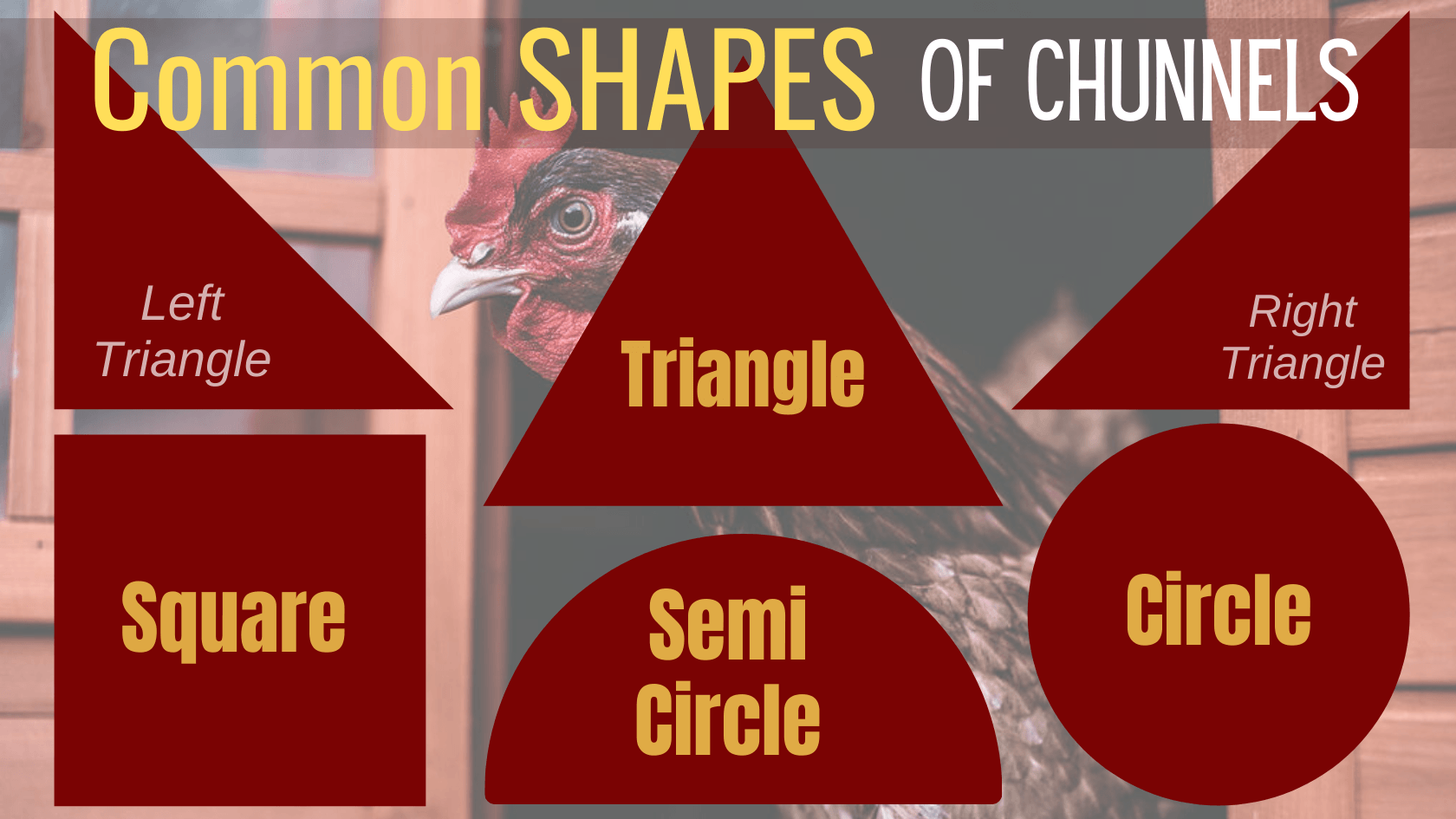
Materials
Something to consider when building your chunnel is that the frame and covering should be durable enough to withstand predators standing on it or reaching through. A flimsy wire that bends easily is definitely not recommended. Nor is a frame constructed from materials that will collapse or bend easily. Netting should never be used because it offers no protection.
Recommended Wire for Covering Framework
To have a predator-proof chicken tunnel, you’ll need wiring that is designed to protect your chickens. To prevent predators from reaching in and grabbing your chickens while they are in the chunnels, we recommend using a ¼”, 23-gauge predator-proof wire. Nothing other than insects can penetrate this wire!
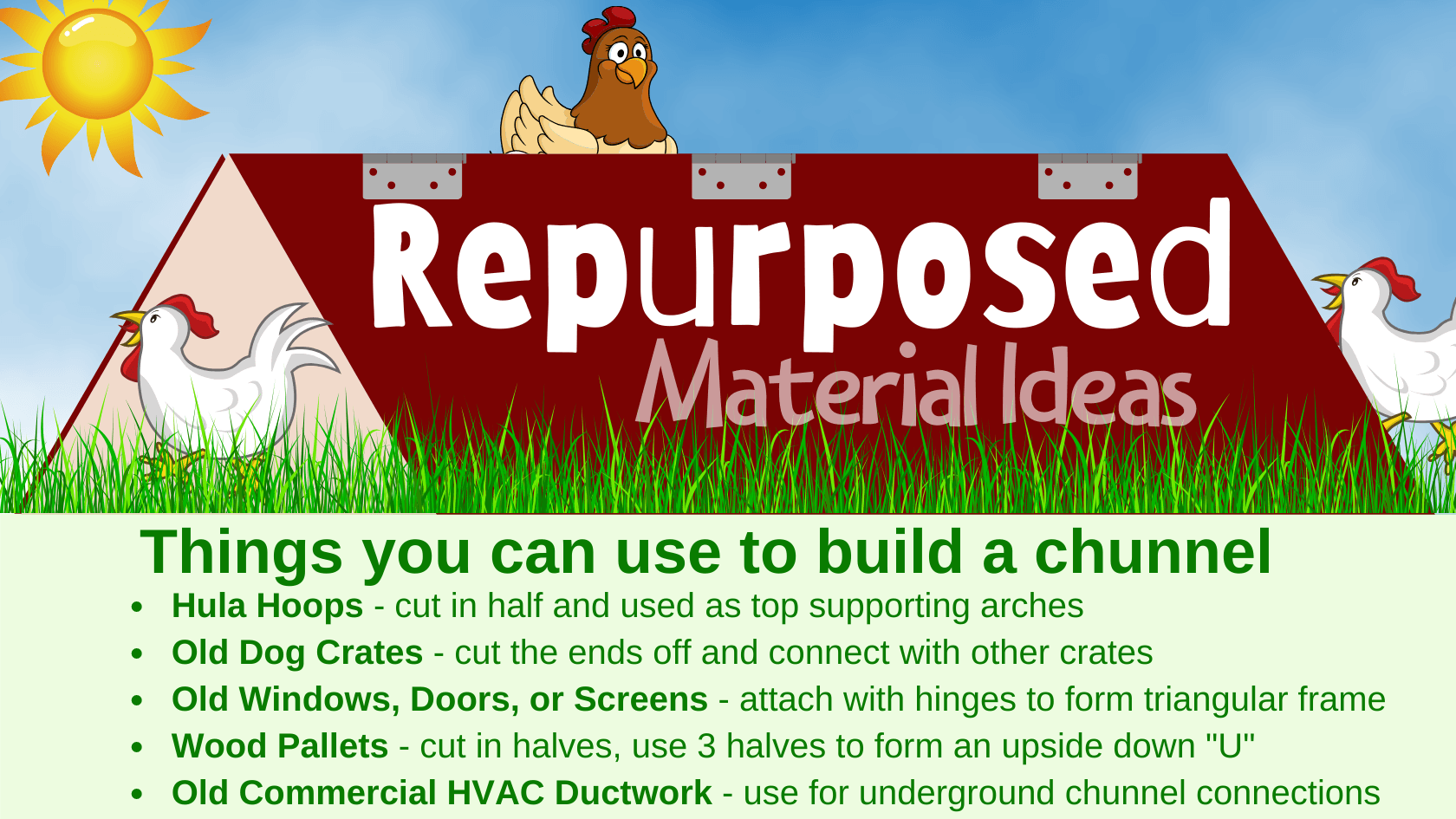
Above Ground Chicken Tunnels
Fencing
The area just in front of the bottom of your fence lines is wasted space. You can install a right/left-sided triangular or square frame against the fence for your chicken tunnel. Having the chicken tunnel fence act as the third support wall of the tunnel, you spend less money on materials.
Garden Edging
Gardeners LOVE having chicken tunnels for the garden to reduce garden pests and insects. Chickens love to eat insects and will reduce the number of harmful insects that invade your garden. Remember that when building your chunnels, don’t let your chickens have access to the garden itself because they will destroy it.
Bridge
This has to be the coolest component of chunnels that we have seen! Instead of walking over and around your chicken’s tunnels around the yard, why not build “up” and construct an elevated pass over or bridge? Of course, the ramp leading up to the bridge needs to be gradual enough to allow your chickens to maneuver their way up and down.
Subterranean
Just as the “bridge” for your chicken tunnel system, the underground passage is yet another ingenious integration of chicken tunneling. You don’t have to step over tunneling with this subterranean corridor by providing your chickens an underground connector!
The Last “Cluck…”
Chicken tunnels for the garden can be simple or elaborate. Either way, you’ll have a blast building them.
You didn’t think having chickens could get this interesting, did you? See, you can develop creative ways to enhance your chicken’s environment while having fun doing it. Once you are done, you can sit back and enjoy the show.
Happy “chickening!”
If you’re interested in knowing how to use the chicken manure from your coop into the garden, check out our article, “Best Manure For The Vegetable Garden.” Between the chicken tunnel and manure, you’ll have an incredible growing space!
Like this post? Pin it!

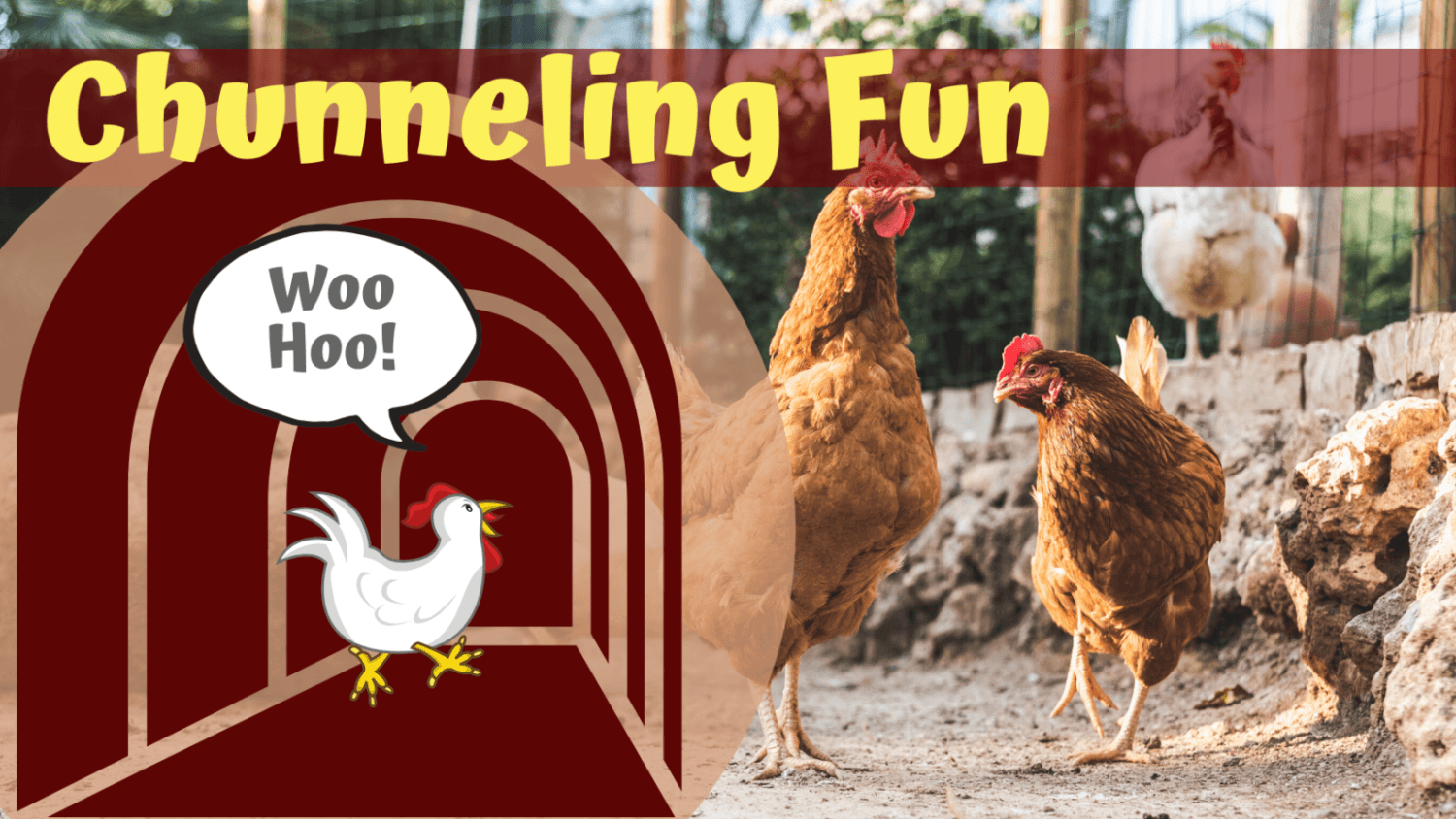
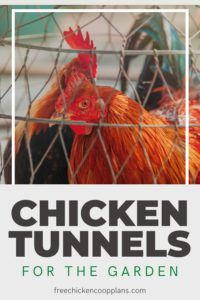


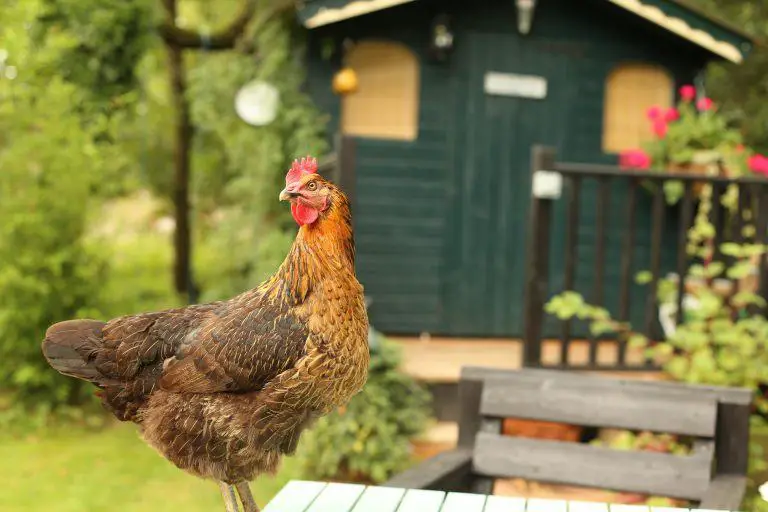



Many thanks for this valuable and detailed post about Chicken Tunnels For The Garden. This is actually the first time I have seen such an idea. A friend of mine raises chicken. I will definitely send this post to him. You have even shown different shapes of this. It is very interesting. He will try this for sure. Keep posting like this.
Thank you Pasindu! I hope this idea works well for him. For some chicken keepers/gardeners, this can be an excellent solution – a win win for both the flock and the garden. Some people have commented they thought they’d have to choose between their chickens or their garden but this solution accommodates both!